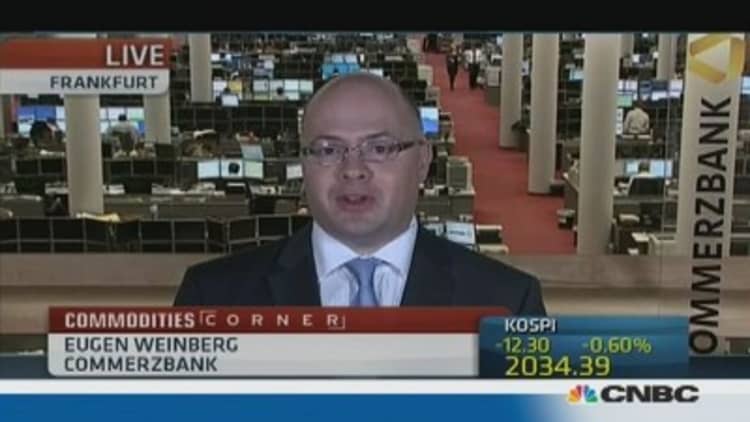The growth of shale oil production in the United States may not hit Saudi Arabia's prominence in the global energy markets as quickly as previously thought, analysts told CNBC.
As 2013 draws to a close, research houses have looked at the future path of the world's largest oil exporter and released a slew of renewed projections.
(Read more: US to surpass Saudi as top oil producer by 2016: IEA)
"We find concerns overstated, due to limitations on shale growth outside of the U.S. and still-fast growing demand for crude," HSBC Global Research wrote in a research note on Tuesday.
However, a surge in global shale output could become "a big deal for MENA (Middle East and North Africa)" in light of rising break even oil prices, it added.
A sustained drop in the sales tag per barrel would certainly be detrimental to the monarchy in Saudi Arabia, which derived 92 percent of its revenues from the commodity in 2012, despite an ongoing diversification effort to stimulate non-oil economic growth.
(Read more: UAE 'not threatened' by US shale boom, oil minister says)
But Riyadh-based Jadwa Investment said that it doubted production of shale would rise "as fast as most observers suggest."

"We do not believe that the growth in oil production from tight rock formations in the U.S., or from shale formations elsewhere, will materially affect Saudi Arabia's long-term position in the oil industry," its report, published Tuesday, read.
Jadwa Investment estimated that shale oil – also known as tight oil -- production would stay at roughly three percent of global liquids supply.
More pressing concerns?
But although this evolution could tighten price differentials between heavy and light crudes, a more pressing threat to Saudi Arabia's oil supremacy could be internal -- through rising domestic consumption -- rather than external.
The December Oil Market Report issued by the International Energy Agency (IEA) last week showed that despite some moderation in demand growth, Saudi Arabia was on track to close out 2013 with an average demand of 2.98 million barrels per day (bpd).
That's up from 2.79m bpd in 2011 and 2.92m bpd in 2012, placing the country – which has a population of just under 30 million -- among the world's top five consumers.

"What is more alarming however, is the estimates that local consumption might top local production within a 20-year horizon, which could eventually erode the Kingdom's main source of revenues," Abdullah Alawi, head of research at Saudi-based Aljazira Capital, told to CNBC.
(Read more: As Saudi women campaign to drive, economists see upside)
Another internal risk is the Kingdom's ongoing struggle with unemployment, which at 12.1 percent is notably higher than several of its regional counterparts endowed with crude wealth. As such, authorities have stepped up efforts to push more locals into the labor force dominated by expatriates.
Earlier this week, Saudi Labour Minister Adel Fakeih was quoted in local media as confirming that more than 254,000 Saudis had secured new jobs since a crackdown on illegal workers began. The campaign turned violent earlier this month when foreign workers clashed with residents, highlighting rising tensions.
(Read more: US' time as world's oil powerhouse to be short)
Notwithstanding the challenges, however, economic growth in the state is expected to remain buoyant.
"KSA's (Kingdom of Saudi Arabia) real GDP (gross domestic product) growth is likely to remain healthy at around 4.2 percent over 2013–18 despite falling crude oil demand and oil prices," Aljazira Capital said.
The International Monetary Fund, meanwhile, projects GDP to expand 3.6 percent this year, and rise to 4.4 percent in 2014.


